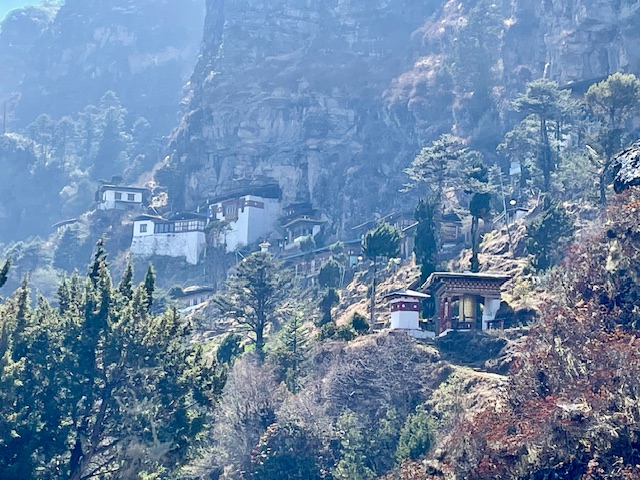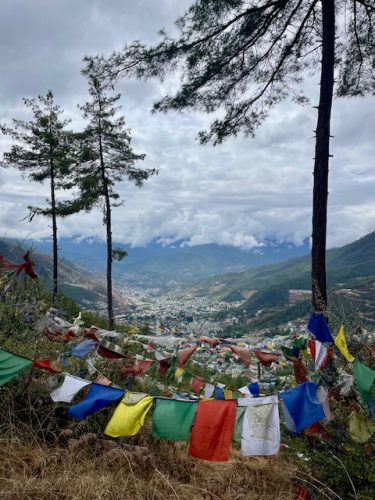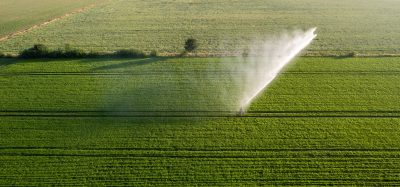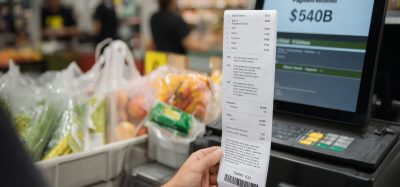Adventures in the world’s only carbon-negative country
Posted: 18 July 2025 | Ruth Davison | No comments yet
Ruth Davison, Chief Storyteller at OurCarbon, explores how Bhutan’s carbon-negative status influences its food, farming and sustainable way of life.


Bhutan is probably best known as being the only country in the world to measure its Gross National Happiness, as opposed to its Gross Domestic Product. But it has another unique claim to fame. Bhutan is the world’s first carbon-negative country.
Reliance on their forests is not enough to ensure Bhutan maintains carbon negativity. The government has developed a comprehensive carbon reduction strategy to mitigate national emissions.”
Unlike carbon neutrality which can be achieved through offsetting, carbon negativity is achieved when a country sequesters more carbon than it emits.
Bhutan is one of just three countries able to make this claim alongside Panama and Suriname. Their most recent National Greenhouse Gas Inventory showed net emissions in 2020 were -6,790.21 Gg CO2e, meaning that Bhutan absorbed almost 7,000 more tonnes of carbon dioxide than it emitted.
Watching our winding descent through the Himalayas as my plane came into land, I could immediately see the main way in which Bhutan achieves this. More than 70 percent of Bhutan’s land mass is covered in dense forests that act as a giant carbon sink. Protected into perpetuity by the Bhutanese constitution and with a strict ban on all timber exports, these forests are growing. In 2015 volunteers set a world record by planting 49,672 trees in a single hour.
Whilst Bhutan has one of the world’s smallest economies, it is also growing. Reliance on their forests is not enough to ensure Bhutan maintains carbon negativity. The government has developed a comprehensive carbon reduction strategy to mitigate national emissions.


Thimpu
Arriving into the capital, Thimpu, I was fascinated to see not just the famous traffic controllers who operate as human traffic lights saving electricity and providing a point of interest for tourists. Battery powered cars are heavily subsidised by the government to help reduce consumption of petrol.
Less immediately visible than their green taxis and vast swathes of forest, is the country’s investment into renewable energy. Sale of hydroelectricity to neighbouring India is now Bhutan’s main source of income and an allowance of hydroelectricity is also provided free of charge to rural farmers as a government subsidy, preventing the burning of wood for fuel. The government is also investing significantly into solar energy production.
But despite Bhutan playing more than their part in reducing global emissions, the impacts of climate change are already clearly visible. On my visit to the historic riverside monastery of Pangri Zampa in Thimpu, I saw the devastation of the flood that destroyed buildings and homes in the areas in August 2024 following an unprecedentedly harsh monsoon. And when I was at the annual Rhododendron Festival in Punaka, my guide had to explain that this year the festival ‘celebrated the entire lifecycle of the plant’ because the flowers that should have been in full bloom were still in bud.
Like every tourist, I was assigned a guide on arrival in the country. Kuenzang spoke with both knowledge and pride about the commitment his country has made to carbon neutrality. As we hiked past rice fields and farms, he was also happy to dispel myths about Bhutanese food. Traditional dishes such as Goep Pa (cow tripe with chillies) and the national dish of Ema (whole chillies in a cheese sauce) have not earned Bhutan a great culinary reputation. But the reality I discovered was totally different.


Local food market
Plants are the centre of Bhutanese cuisine and their (delicious) locally grown, organic plants are in far greater demand than the cheaper, mass produced alternatives imported from India. As I travelled the country the main crop that was in season was asparagus, sown in rows between the trees in traditional apple orchards.
Asparagus arrived in Bhutan in 1971 when the then King Jigme Dorji Wangchuck – known now as the Father of Modern Bhutan – began to open the country to the rest of the world for the first time. One of the first guests invited was a Japanese agricultural officer, who introduced not just asparagus but hybrid seeds modern farming techniques, including the first tractors.
Another key crop in Bhutan is cordyceps – fungi that are highly prized for their health benefits, particularly in India and China. Cordyceps farmers, who once made a week long hike to the nearest town to barter their mushrooms for butter or meat, now arrive at international auctions by helicopter and leave having secured up to $60,000/kg for their harvest.
Cordyceps have created extreme wealth (and high carbon footprints) for the tiny number of local farmers who continue to brave the extreme conditions of the high north. But across most of the country, villages are still divided into traditional family plots. As more roads have been built, these rural communities have been connected to markets but with currency only being introduced to the country in 1968, self-sufficiency and bartering remain common. The majority of Bhutan’s 750,000 citizens still work in agriculture, with city dwellers renting their land to allow the development of some larger farms.
Their tiny population is in itself a reason why Bhutan’s carbon footprint is low. The demand for food is low. But the other main reason is the practical outworkings of Bhutan’s Buddhist beliefs and concern for all sentient beings.
Meat is believed to contain the soul of the animal and therefore eaten rarely. The country has no abattoirs so meat is either air-dried to allow time for the soul to depart or imported. Dairy features heavily in many meals with Chugo (a dried cheese that requires significant jaw power to chew) the preferred local snack. But dairy farming is low intensity, with cattle cared for on individual farms and treated with deep respect. The government is investing into helping rural farmers create biogas from animal waste as well as organic fertiliser.
A visit to Bhutan highlights the incredible effort the Kingdom makes to minimise their carbon footprint, and by the deep connections between government policy and their 1,200 year old Buddhist culture. The Kingdom remains highly vulnerable to climate change and is already paying the price of a crisis it has not caused.
As I left, I had one final question for Kuenzang – whether the government included the flights that I and other tourists take within their carbon footprint. The answer was – of course – yes. I offset my flights anyway by – of course – paying for more trees to be planted in Bhutan.
Meet the author


Ruth Davison, Chief Storyteller at Our Carbon
Our Carbon supports businesses in achieving product-level granularity in their carbon audits. The company helps businesses make decisions that are better for both the planet and their operations, while also sourcing stories that inspire.









